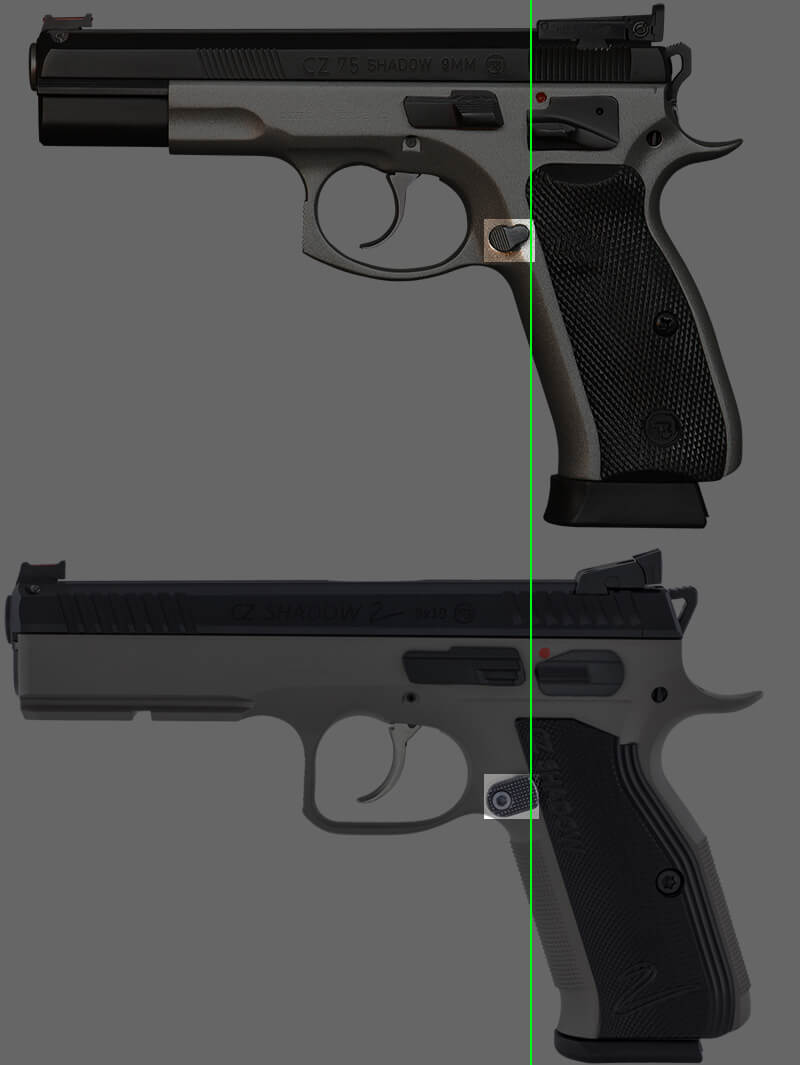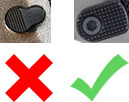Pistol Magazine Releases: The Ultimate Guide
 Bryan Hill / March 21 2024
Bryan Hill / March 21 2024
If you ever need to reload quickly, a good pistol magazine release can make a big difference. We'll cover how much a good pistol magazine release improves your reload speed, how to tell a good pistol mag release from a bad one, and whether to upgrade your pistol's mag release.
On This Page:
- Basics
- Why does a Good Mag Release Matter on a Pistol?
- What Makes a Good Mag Release?
- Should I Upgrade My Mag Release?
- References
Basics
The magazine release (mag release) is a button or paddle.
When pressed, it releases the
magazinefrom the
grip.
Why does a Good Mag Release Matter on a Pistol?
A case study by a USPSA Grandmaster Karl Rehn found that upgrading the stock Glock mag release made reloading 29% faster on average.
What Makes a Good Mag Release?
-
Easy to reach. It should be close to your dominant thumb on the pistol.
-
High enough. If it's too low, it's hard to feel where it is to press.
If it's too high, it gets caught on things, or can get accidentally pressed while holstered.
-
Big enough. The smaller the mag release, the longer it takes to find and press it.
It should be as large as it can be without causing accidental presses.

-
Texture is grippy, without tearing up clothing.
A cross-hatched texture is better than single-hatched.

-
Firm enough. It's stiff enough to not drop the magazine while holstered, but not so stiff that it wastes time to press all the way.
Should I Upgrade My Mag Release?
It depends:
-
Self-defense: Yes, if your pistol has fewer than 10-20 rounds.
-
Competition: Yes, it can save 1-2 seconds off of a match course.
-
Duty carry: Yes, always.
Why? Claude Werner collected 482 self-defence incidents ,
and found that on average, defenders fired 2 shots, but the most anyone shot was 20 times. Defenders only reloaded in 3 gunfights.
John Correia of Active Self Protection found that of 5,000+ videos of real recorded gunfights, only 3 civilians had to reload in the middle, and only 7-8 would have done better if they reloaded .
For self-defense, When there's less than a 1% chance you'll need a reload, there are better things to train and upgrade. If you nail down what's common to all self-defense shootings (your draw to first shot, trigger control, grip technique, use of cover/concealment, shooting on the move, mindset, etc.), then maybe reloads are worth focusing on.
For duty carry, officers average 2-3x as many shots as self defenders,
and may find that 47 rounds isn't enough to stop determined criminals .
For officers and other uniformed defenders, faster reloads could save lives.
Related Articles
Feedback
Are you happy with this page?
References
-
Why one cop carries 145 rounds of ammo on the job (2020)
-
Do Aftermarket Mods Help You Shoot Better? (2019)
-
Observations From 5,000 Gunfights (2017)
-
Analysis of Five Years of Armed Encounters (With Data Tables) (2012)